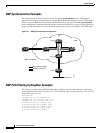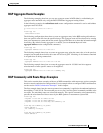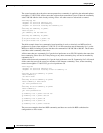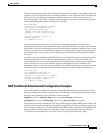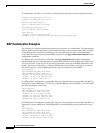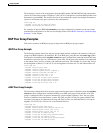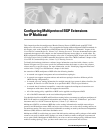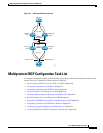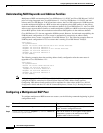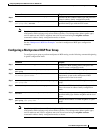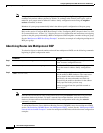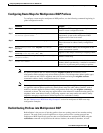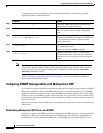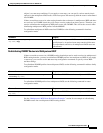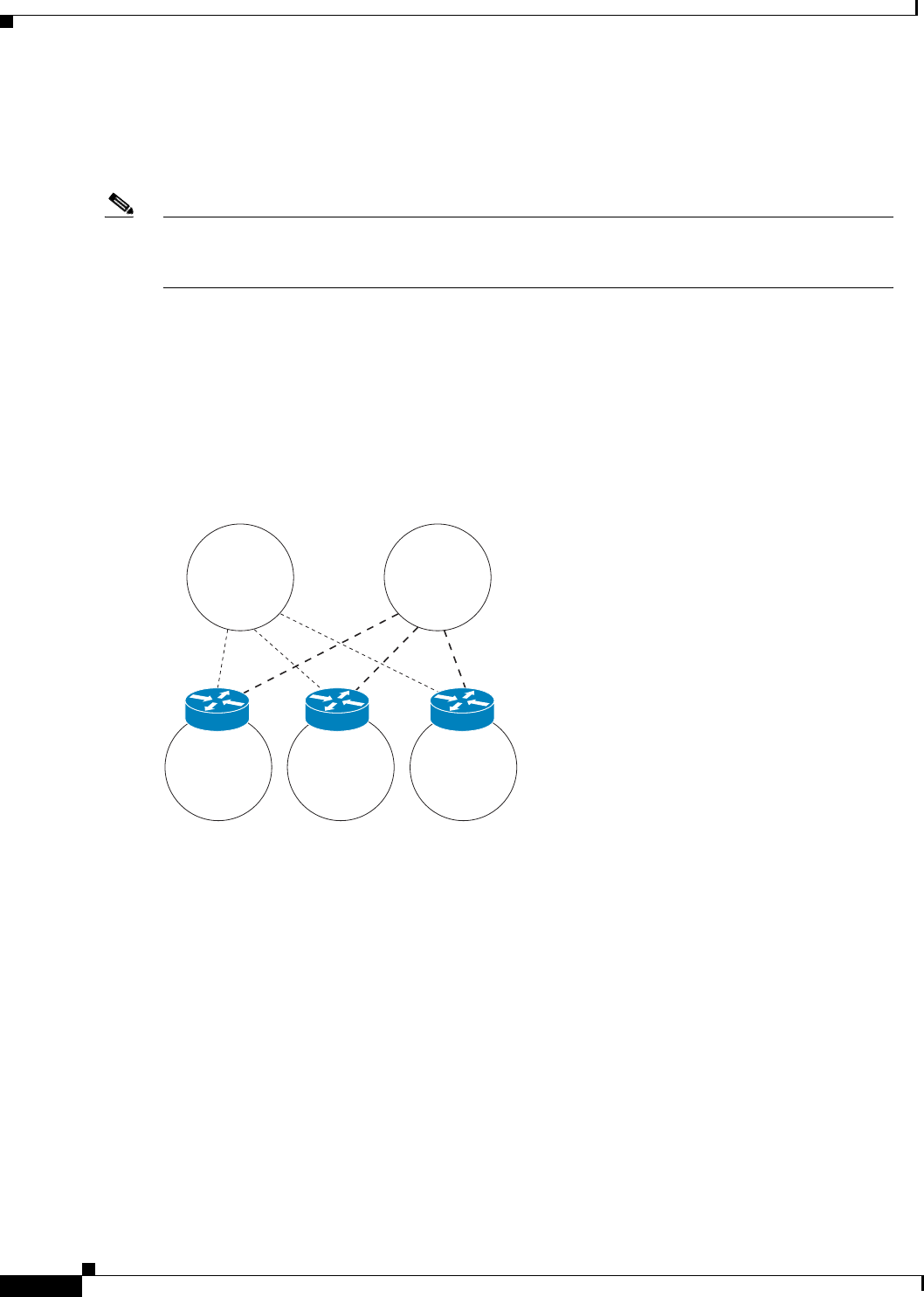
Configuring Multiprotocol BGP Extensions for IP Multicast
IPC-348
Cisco IOS IP Configuration Guide
In BGP, the only way to perform interdomain multicast routing was to use the BGP infrastructure that
was in place for unicast routing. If those routers were not multicast-capable, or there were differing
policies where you wanted multicast traffic to flow, multicast routing could not be supported without
multiprotocol BGP.
Note It is possible to configure BGP peers that exchange both unicast and multicast network layer
reachability information (NLRI), but you cannot connect multiprotocol BGP clouds with a BGP
cloud. That is, you cannot redistribute multiprotocol BGP routes into BGP.
Figure 60 illustrates a simple example of unicast and multicast topologies that are incongruent, and
therefore are not possible without multiprotocol BGP.
Autonomous systems 100, 200, and 300 are each connected to two NAPs that are FDDI rings. One is
used for unicast peering (and therefore the exchanging of unicast traffic). The Multicast Friendly
Interconnect (MFI) ring is used for multicast peering (and therefore the exchanging of multicast traffic).
Each router is unicast- and multicast-capable.
Figure 60 Incongruent Unicast and Multicast Routes
Figure 61 is a topology of unicast-only routers and multicast-only routers. The two routers on the left
are unicast-only routers (that is, they do not support or are not configured to perform multicast routing).
The two routers on the right are multicast-only routers. Routers A and B support both unicast and
multicast routing. The unicast-only and multicast-only routers are connected to a single NAP.
In Figure 61, only unicast traffic can travel from Router A to the unicast routers to Router B and back.
Multicast traffic could not flow on that path, so another routing table is required. Multicast traffic uses
the path from Router A to the multicast routers to Router B and back.
Figure 61 illustrates a multiprotocol BGP environment with a separate unicast route and multicast route
from Router A to Router B. Multiprotocol BGP allows these routes to be noncongruent. Both of the
autonomous systems must be configured for internal multiprotocol BGP (IMBGP) in the figure.
A multicast routing protocol, such as PIM, uses the multicast BGP database to perform Reverse Path
Forwarding (RPF) lookups for multicast-capable sources. Thus, packets can be sent and accepted on the
multicast topology but not on the unicast topology.
Unicast
AS 100 AS 200
ISP B
FDDI FDDI
ISP A ISP C
12238
AS 300
MFI



